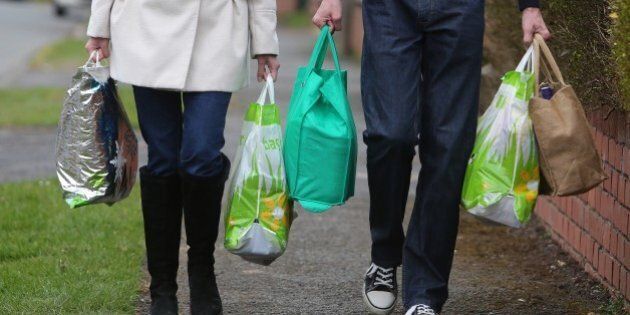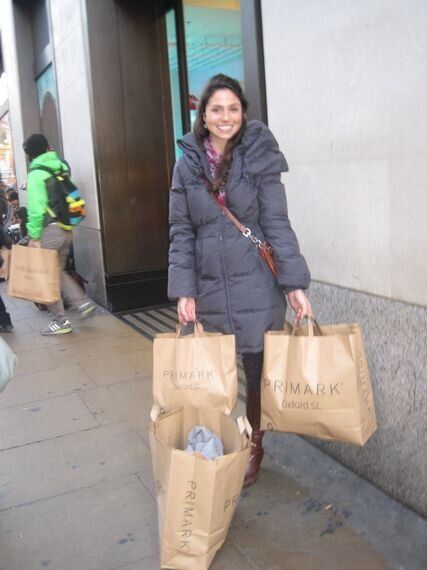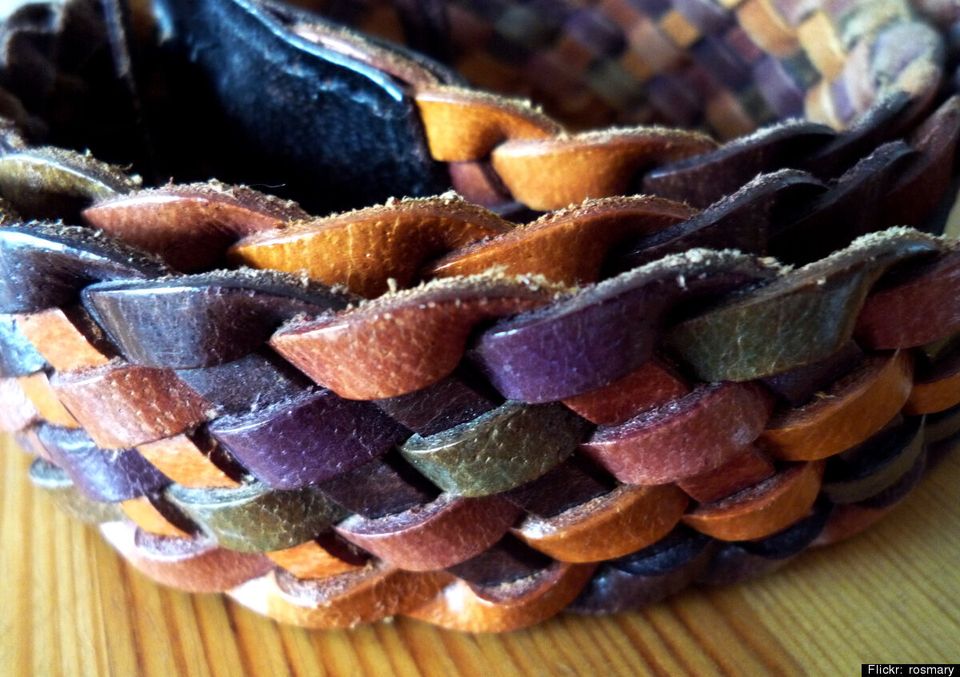
The average American throws away about 70 pounds of clothing and other textiles every year, and this amount has grown substantially in the past decade. It's an astonishing amount of consumption that's likely to increase as North Americans become more comfortable with a shopping routine of cheap clothing fixes.
I was part of that pack. I bought lipstick regularly because I got bored of the same hue, and I regularly shopped fast fashion retailers to have something new.

The writer shopping at major fast-fashion retailer Primark in London, England, in 2011.
I'm not an expert because I now consume less. But, the more I research fast fashion, the more I realize that we're only at a stage where we talk about the need to consume less. So, how do we actually buy and throw away less?
In a recent conversation, Supply Chain Management Expert Michael Lavergne told me that ethics start in the home.
"Here in Canada we should be starting at the public education level. My kids don't get hardly enough instruction and education regarding consumption, sustainability, earth sciences or human rights issues until senior high school."
I agree and I believe that if we start educating children at the critical age -- where they are being influenced by celebrity culture and other kids about what to look like, what to think, and who to be -- we could create positive change. I'm not a parent, but I was once a kid influenced by makeup, fashion, and magazines to make me feel better or more accepted.
Consuming less clothing and other textiles like shoes and accessories is not revolutionary. It's a realistic step forward.
Here are three ways people of all ages can understand and teach consumption, without sacrificing or diminishing individual definitions and enjoyment of fashion and beauty:
We can thank Canadian not-for-profit Fashion Takes Action (FTA) for creating workshops that educate young girls and boys about important world issues through the topic of fashion.
FTA workshops help kids understand where their clothes come from, how they're made, and whether they really need a new article of clothing. The latter ties into an interactive element where kids make a T-shirt into a bag to understand the importance of recycling and upcycling.
The message isn't to stop shopping -- it's OK to shop, but we need to be mindful of how much we're buying. My mother taught me early on the discipline of choice. If I had three shirts in my hand, I was only allowed to buy one. Parents can try to encourage similar decision making to teach kids not to over-consume fashion.
Tree Change Dolls is a hobby that turned into an unintentional education tool, and is now quickly relating with women, mothers, girls, and parents around the world.
Hobart, Tasmania native Sonia Singh recycles, repairs, and upcyles second-hand Bratz dolls. She repaints their faces for a natural look, and adds clothing that displays a more down-to-earth style. Singh's approach is a positive influence. She's teaching girls that they don't need a new outfit, dress, or certain cosmetics to be accepted, and look and feel good.
I have 25 slaves working for me. I consider that a low score given my minimal lifestyle.
The slavery footprint tool was launched a few years ago by anti-slavery organization, Made In a Free World. The tool guides users through their medicine cabinets, meals, electronics, sports equipment, and closets, to select amounts using sliding scales and clickable images. The survey helps educate users along the way with relevant facts and statistics, and at the end participants have an opportunity to send notes to the brands that they buy from to help reduce their slavery footprint.
While it's the first tool I've used that has made my consumption so apparent, I'd like to see Made In a Free World incorporate more actionable outcomes. What immediate next steps can people take to reduce their consumption? A daily or weekly challenge could encourage participants to put their new thinking in action.
For more stories about creativity and fashion, sign up for my newsletter.
ALSO ON HUFFPOST:
